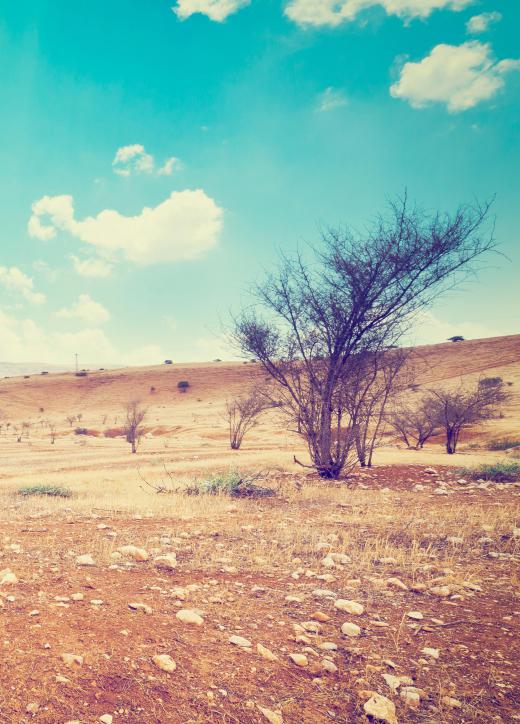What Is a Dust Devil?
A dust devil is a natural phenomenon that occurs primarily in areas that have intense surface heating, which produces rolls of air close to the ground. The upward whirlwind that picks up dirt, debris, and other particles is called a dust devil. There are several factors that contribute to the size of the whirlwind, including dryness of the soil, wind speeds, and the temperature of the ground. Due to the dust and debris, these whirlwinds are extremely visible and can occasionally be dangerous. Many areas, such as desert land, are more prone to experiencing a dust devil than locations with cooler climates.
Formation begins as the ground temperature rises, usually during calm winds and a clear sky. Hot surface air advances upwards through cooler air and rotation begins gradually spinning faster and faster, forming the dust devil. The intake of hot air into the vortex causes the rotation speed to increase as well as the size of the whirlwind. As the speed increases, the suction of debris and dust increases making the whirlwind extremely visible.

The size, speed, and time interval of a dust devil varies greatly. The average diameter may range from 10 feet to 300 feet (3.04 m-91.44 m), and the height usually averages 400 feet to 1000 feet (121.92 m-304.8 m). Dust devil time lengths usually do not exceed several minutes, but some extremely hot and dry climates experience larger whirlwinds that may last up to an hour. Extreme speeds could reach 60 miles per an hour (96.5 km/h), which would result in heights as great as 3,000 feet (914.44 m).
Although most dust whirlwinds form in wide open spaces, they can be damaging in more populated areas. They are not as intense as tornadoes but still cause damage to buildings and other structures. Most damage is caused by the whirlwind's ability to move along the ground, but the dust devil collapses once the warm air dissipates.
Mount St. Helens' volcano erupted in 1980, and the amount of volcanic ash made hundreds of sand devils visible. The volcanic ash lingered over thousands of square feet of land for at least a year, and these whirlwinds were able to be viewed daily. These tornado-like dust funnels have also been recorded on the planet Mars and are usually referred to as martian dust devils, which have red sands that swirl throughout. The height of these martian whirlwinds can extend over two miles (3.2 km) high, and they have diameters that surpass 1,000 feet (304.8 m).
AS FEATURED ON:
AS FEATURED ON:











Discussion Comments
I visited a friend out in New Mexico one summer, and his ranch's property line went right to the edge of a desert. He drove us out a little ways and pointed off to the west. I could see what looked like a small tornado on the ground, but it wasn't even cloudy or raining that day. He said it was a dust devil, and they happened all the time where he lived. Sometimes the cloud of dust moved over his property, but most of the time it just spun circles in the desert.
I can't say I was scared to see this thing, but it was something that could probably hurt someone if they were right in its path. The sand blown up from the desert on a regular day was bad enough.
I remember looking out of a classroom window and seeing really small dust devils form on the asphalt part of the playground. They were never a threat to anything, just a bunch of leaves and dirt swirling around like a tiny funnel cloud. They'd spin up for maybe 30 seconds and then quit. My teacher called them "dirt devils", but my mom called them "dust devils". Our area didn't get the really big dust devils described in the article, though.
Post your comments